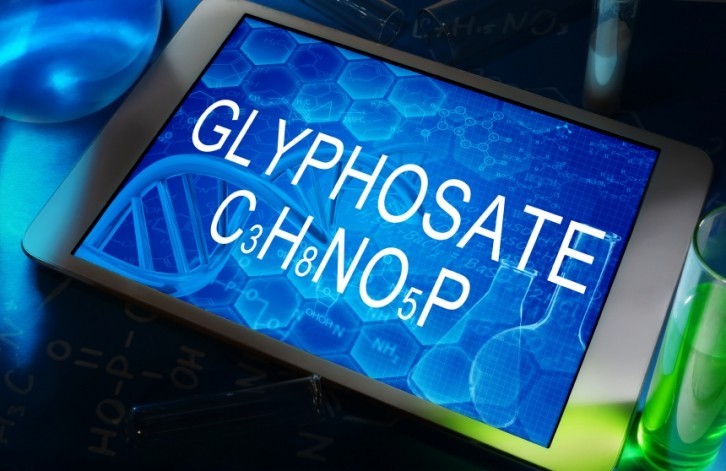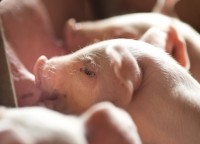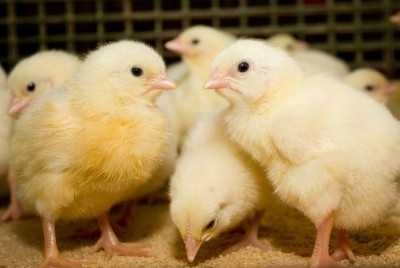EU body: No risk to animal health from glyphosate residues in feed

Residues from the controversial herbicide in feed are not expected to have a major, if any impact, on livestock or equine animals’ health, said the European Food Safety Authority (EFSA) in a risk assessment published yesterday (May 17).
The EU risk assessor said it evaluated all available information on the presence of glyphosate in feed, including imported feed to reach its conclusion.
It had been mandated by the Commission to look at the potential impact on animal health of glyphosate residues in feed.
EFSA also published its review of the maximum residue levels (MRLs) of glyphosate legally permitted to be present in food. MRLs are set to ensure that consumers continue to be protected against excessive quantities of glyphosate in their diet and are based on an analysis of all existing authorised uses of the herbicide in the EU. EFSA said the review, covering all crops treated with glyphosate, shows current exposure levels do not pose a risk to human health.
EFSA said glyphosate, and its metabolite AMPA, are not expected to have an impact on the health of cattle and sheep, horses, pigs and poultry, on the basis of the available data.
For cattle and sheep, the absence of adverse effects on the ruminal microflora based on in vitro data was demonstrated up to a dose of 292 ppm in the diet (dry matter), said the Parma-based agency.
“This level covers the maximum dietary burden for all authorised uses except the use of glyphosate on grass forage. Minor effects on the microbial communities of the rumen have not been investigated for the use of glyphosate on grass forage but can be excluded for all other uses.”
EFSA said the maximum dietary burden covering all uses including grass forage (342 ppm for cattle and 530 ppm for sheep) was investigated in in-vivo animal studies:
“Considering the results of the toxicological studies on different species and in particular the absence of adverse effect in dairy cows fed during 28 days with a diet containing 400 ppm of glyphosate, glyphosate is not expected to have, even at the maximum dietary burden, effects on the microbial communities in the rumen impacting on the health of bovine and ovine species."
Piglet cases referenced in EFSA risk assessment
The EU risk assessor referenced a feeding study with Danish pigs (6 months and 2.5 years) that had observed a decrease in piglet survival rate when the feed included barley treated with Cerone (containing ethephon) and Roundup (containing glyphosate). The EFSA assessors, however, said this effect could not be attributed to glyphosate since it was not observed with barley treated only with Roundup. "Furthermore, a possible impact of the co‐formulants could not be excluded."
EFSA addressed the case whereby malformations in newborn piglets on a Danish farm had been attributed to glyphosate simply because residues of this active substance were found at extremely variable concentrations in different organs and tissues of these animals. “In the absence of any control group, and taking into account the rather low dietary exposure of the sows and the results of a multitude of developmental studies, this assumption is not sufficiently substantiated to be relied upon.”
How the assessment was done
The Authority said the initial assessment of the animal health aspects of this opinion was carried out by Germany, the rapporteur member state (RMS). It provided a draft addendum to the renewal assessment report to EFSA in April 2017. That was dispatched to the EU-28 and the relevant companies for consultation and comments, with EFSA also providing comments.
“Comments received were collated by EFSA and forwarded to the RMS for consideration during the revision of the addendum. Furthermore, a systematic literature review was conducted by EFSA to complement the available data set, in particular as regards in vivo studies on farm animals. The additional studies identified were also assessed in the revised addendum made available by the RMS on 23 June 2017.”
A Pesticides Peer Review Experts’ Teleconference in June last year also weighed in on the hazard assessment aspects of the evaluation. “Details of the issues discussed, together with the outcome of these discussions were recorded in the respective meeting report. In addition, further revisions of the addendum were produced by the RMS following the expert consultation.”
EFSA said data including feed consumption data and studies assessing levels of glyphosate residues in feed materials taken from the reasoned opinion on the review of the existing MRLs for glyphosate were also considered for the exposure part of the risk assessment.
A final consultation on the conclusions arising from the evaluation of the impact of glyphosate and its residues in feed on animal health took place with member states via a written procedure in October 2017, it added. The European Medicines Agency (EMA) also reviewed the report.
“In addition, during the finalisation of the assessment, additional information available to the RMS but not submitted to EFSA was identified. The European Commission asked EFSA to request that information and consider it in the final assessment. Therefore, further amendments have become necessary at the final stage.
“More specifically, further considerations on the toxicological profile of the N‐acetyl compounds were made on the basis of the assessment of toxicological data provided in the context of the Art 10 MRL opinion (EFSA, 2009), following consideration of the raw studies made available to EFSA in January 2018 and taking into account other international evaluations. Furthermore, following late changes occurred in the authorised uses on grass, amendments were triggered in the livestock exposure assessment in the Art 12 MRL review, and the impact on animal health was reconsidered accordingly.”
What is glyphosate?
Glyphosate is valued in farming as an effective remedy to fight weeds. When the active substance glyphosate was introduced in farming in 1974, it was used for simple weed control that would normally not leave residues in the harvested crops. Later it became common to use glyphosate during the actual cultivation of crops, either for desiccation of for instance grain shortly before harvest or for weed control in crops genetically modified (GM) to be tolerant to glyphosate, such as GM soybeans; it is such uses that have prompted concerns about residues in feed, according to the Danish Center for Food and Agriculture.
In addition to its properties in weed control, glyphosate is also patented as a broad-spectre antibiotic that can affect bacteria and other microorganisms. Further, glyphosate is patented for its ability to bind minerals.
Danish research
Meanwhile, research is underway in Denmark to examine whether glyphosate residues originating from herbicides used in the feed production can affect the health and productivity of farm animals.
The project, which is funded to the tune of DKK 10m (US$1.6m) by the Velux Foundations, got underway in January 2017 and is set to run until 2020. It is led by Martin Tang Sørensen, senior scientist in the Department of Animal Science at Aarhus University.
The researchers will look at the impact of glyphosate on gastrointestinal microorganisms and on the mineral status in pigs and poultry as well as possible secondary effects on the animals’ health and productivity.













